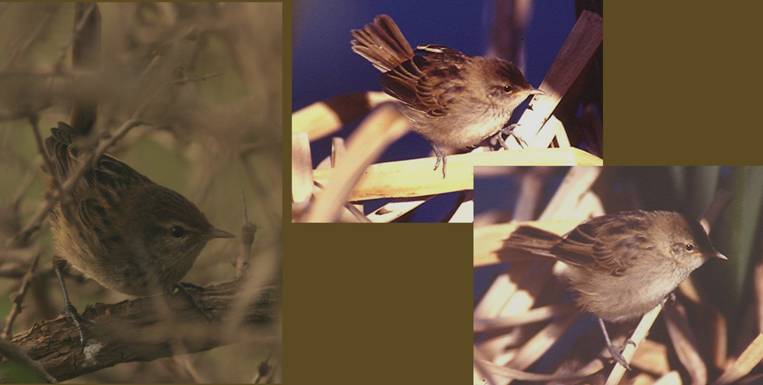Couple
of points on the call. It can sound faint when coming from say 50m or more when
it seems to float faintly on the wind. It can seem loud from about 10m, almost
startling. If the bird is very close, say 2-3m it can sound tentative and
confiding, as if trying to start a conversation. At that time the
pee-peeer-pee can be just an enquiring ‘pee-peer’.
The
elements in the original pic, as so often, were governed by the lighting. The excessive
light probably washed out the streaks. I would think they’d be evident through
binoculars. If you want to ID a bird on the spot, use binoculars. A camera
viewfinder is a very poor substitute. Some effects of light below, adult in
shade on left, juvs in sunlight on right. I might mention the processing
effect again. ( eg colour enhancement turns some female honeyeaters into
males.) If Lindell had really cropped and darkened the pic it might have
helped the ID although it mightn’t have been much from an aesthetic viewpoint.

From: Barbara Jones [
Sent: Tuesday, 21 December 2010 8:24 AM
To: Canberra Birds
Subject: [canberrabirds] Little Grassbird calls
John asks: different calls – different geographical area?
I hear the call of the Little Grassbirds on the Far South Coast as
the same pitch as a distant reversing heavy vehicle/machinery ‘beep’, although
softer and thinner. Comments?
Sent: Monday,
December 20, 2010 6:16 PM
Subject:
[canberrabirds] Little Grassbird vs Clamorous Reed-Warbler
Lidell’s photo generated much debate/argument at our place, finally
everyone settled for a juvenile Little Grassbird, but were surprised to read.
“Its sound is a very weak whistle.” In our experience it’s quite the opposite
and more often heard than seen. However this reminds me that I’ve sometimes
thought the same species will give different calls depending on the
geographical area. Anyone?
And I thought Clamorous Reed-Warbler
was now Australian Reed-Warbler, or have the taxonomists changed it?
John Layton
Holt.

